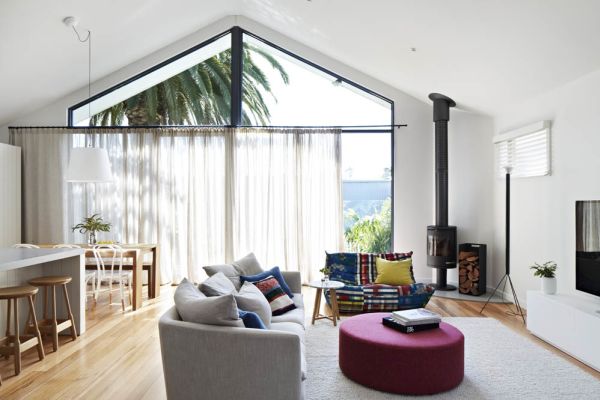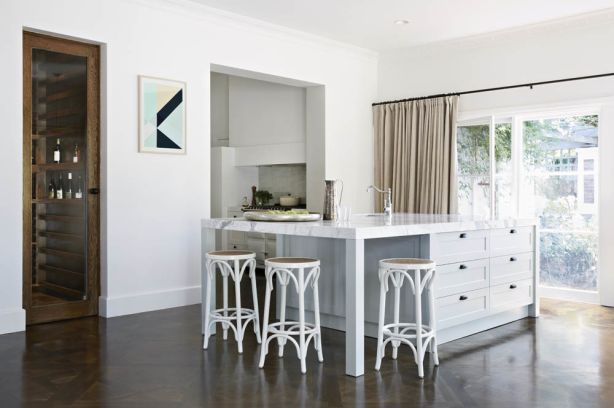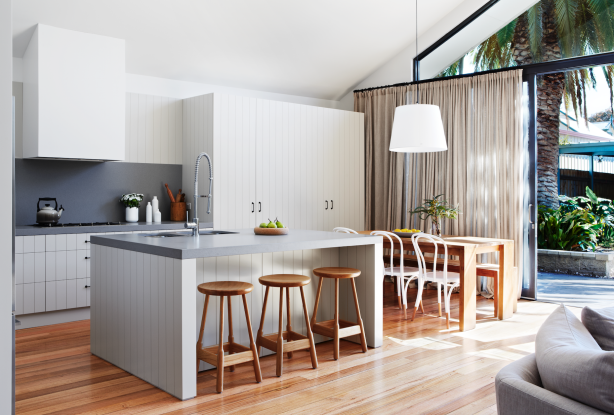
When it comes to our homes, creating spaces that make us feel relaxed and comfortable is something that we all aim for.
Your home is your sanctuary and making it a place that triggers positive emotions is something that you can do through colour and design choices, as well as, simple changes like your organisational habits.

Lighting choices play their part in creating positive vibes in the home. Photo: Bloom Interiors
Clean up your act
Marie Kondo’s Netflix series Tidying Up had millions across the world decluttering and organising their homes at the beginning of the year, and for a good reason. Research by the Personality and Social Psychology Bulletin revealed that those who described their living spaces as “cluttered” were more likely to feel depressed or fatigued than those who described their homes as “restful”.
Decluttering is one of the most obvious, yet easy ways to improve the way you feel when you’re at home, which makes spending an hour putting things in their right spot, cleaning out that cupboard or finally getting to the bottom of the ironing basket doesn’t seem too bad.
Colour your world
There’s scientific evidence now to support the contention that specific colours actually boost moods, create feelings of calm and increase our happiness. Taubmans Paint conducted a world-first study, using VR technology to discover which colours evoke the top emotions.
Tim Welsh from Taubmans explains, “The right colours will make you feel relaxed and calm, or cheerful and excited, yet pick the wrong colour scheme, and your walls risk making you feel bored, tense and, worst of all, irritated”.

Which shades should you keep in your back pocket? Unsurprisingly, within the Taubmans study, the participants favoured soft green, faded lilac and pastel blue as the most relaxing, while eggshell and cream fared the best when it came to creating calm.
For boosting energy, yellow, orange and the occasional pink were proven to be the best for evoking feelings of excitement and cheer. However, these bright tones can also make some people feel tense and irritated. Grace Garret, a Taubmans colour consultant, advises to “use these colours sparingly, and consider smaller spaces, painted shapes and feature walls”.
While dark colours are on the rise, the bold choice of blacks and greys can leave some people feeling a little dull. Garret recommends using darker colours in spaces where the aim is to create a moody space.
“An entrance, powder room or bathroom are ideal spaces for implementing a darker feature colour. These are spaces you don’t spend a lot of time in, but can create a striking impact without having to be surrounded by it for long periods.”
Light it up
According to architectural draftsman Kris Kencevski, the amount of natural light that enters the home is becoming an increasingly popular topic.
“Natural light is, without a doubt, something people are asking for in their designs. Home owners want maximised light, and it’s something that I always consider when I’m looking at a space.”

Photo: Bloom Interiors
“If you are building a brand new house, consider windows in the north and south to get a good air flow through and increase your ventilation. This always helps with clarity and brain fog,” says Kencevski.
If a new build or buy is on your agenda, or if you’re on the search for a rental, there are things you can look out for to ensure that you get as much out of your home as possible.
“You want to avoid ‘habitable’ rooms, such as bedrooms, being in the west of the home. These rooms generally get hotter and absorb the most sunlight, and being in a stuffy room will impact on your wellbeing. Put them in the south of the home instead.
“For me, the objective of any floor plan is to orient majority of the living spaces to the north and maximise the natural sunlight that you get”, says Kencevski.
article by www.domain.com.au
